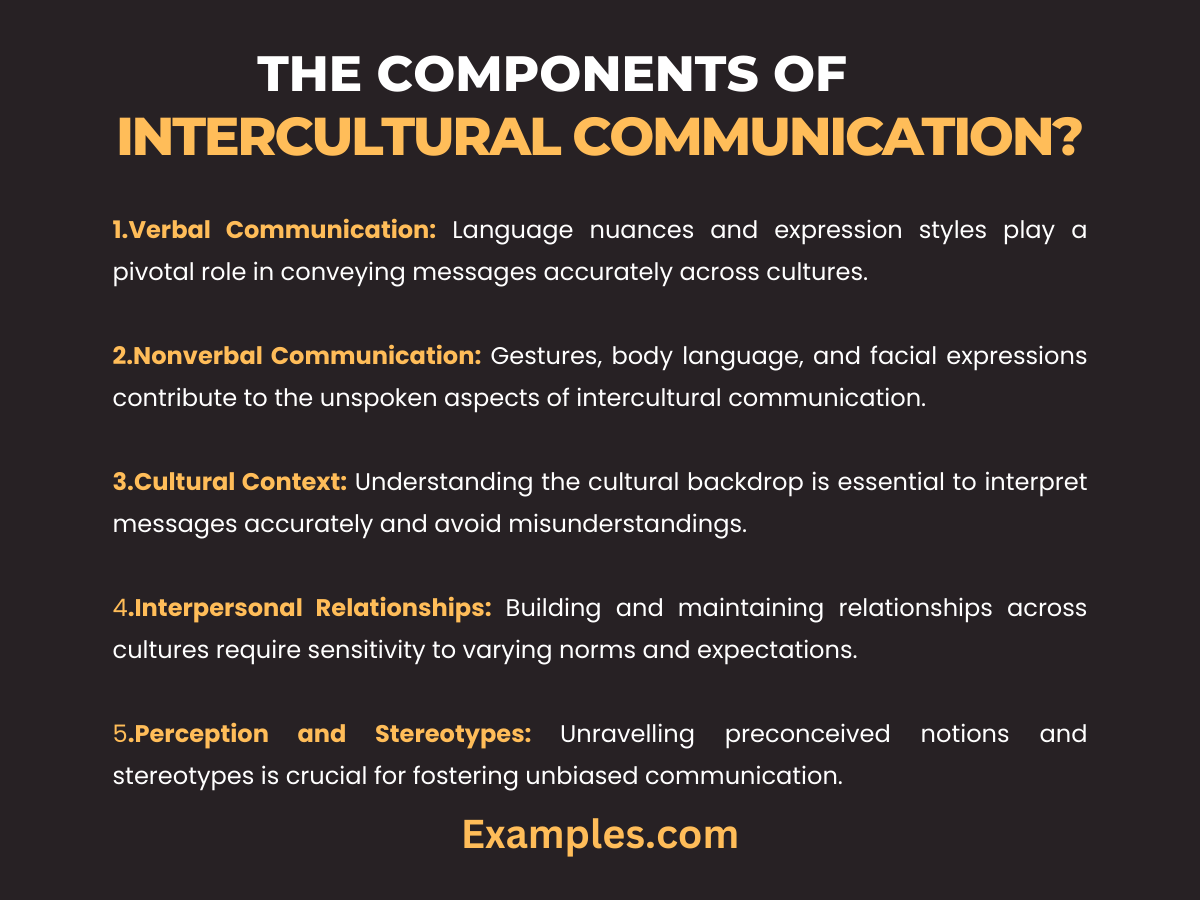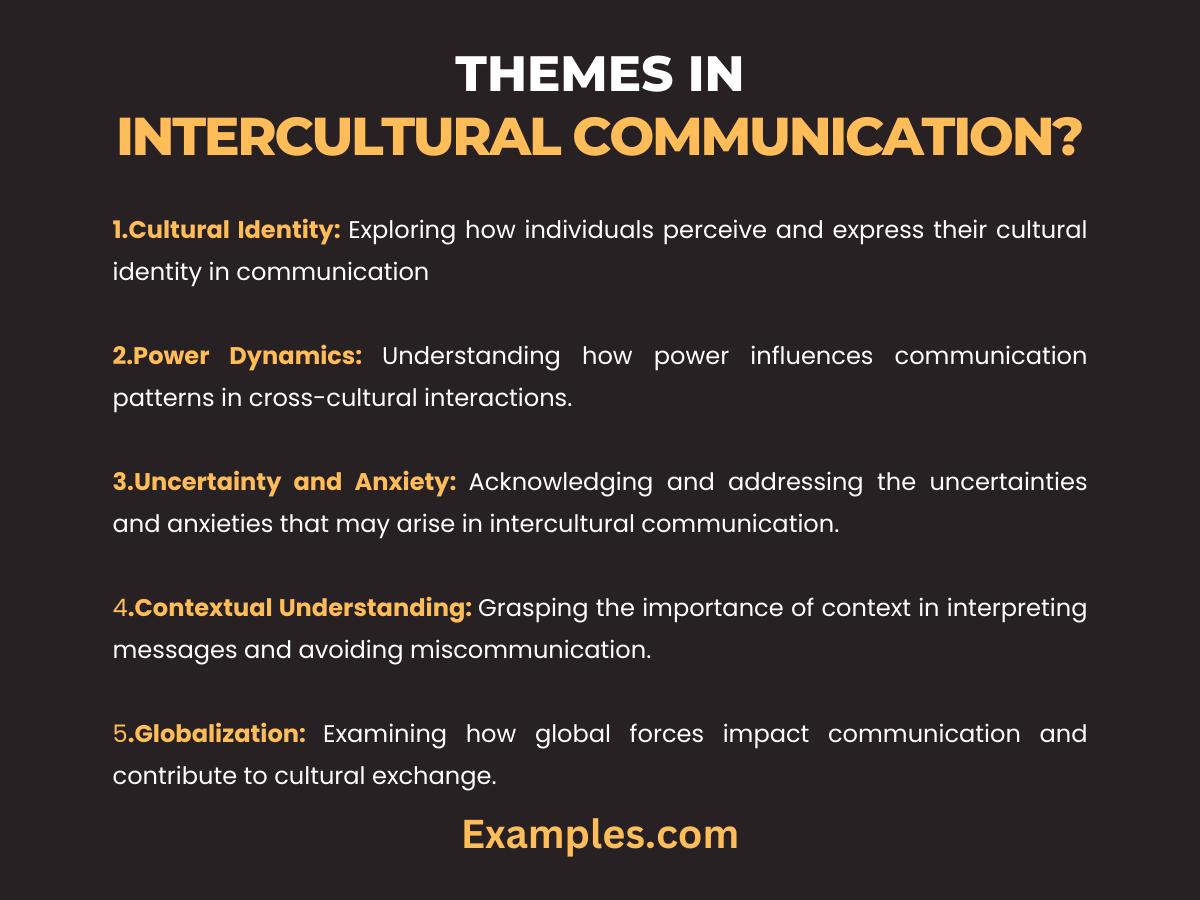What is Included in Intercultural Communication?
Embark on an enlightening journey to uncover what’s included in intercultural communication with our comprehensive guide. This exploration delves into the intricacies of cross-cultural interaction, shedding light on its various components and themes. Immerse yourself in practical insights and real-world communication examples, equipping you to navigate the diverse tapestry of global connections with finesse. Enhance your communication skills and embrace the rich nuances of intercultural dialogue in this detailed and informative guide.
What is Included in Intercultural Communication?
Embarking on the journey of intercultural communication involves navigating a rich tapestry of elements and components. This guide unveils the key inclusions, offering a nuanced understanding of the factors that shape effective cross-cultural interactions.
The Components of Intercultural Communication

- Verbal Communication: Language nuances and expression styles play a pivotal role in conveying messages accurately across cultures.
- Nonverbal Communication: Gestures, body language, and facial expressions contribute to the unspoken aspects of intercultural communication.
- Cultural Context: Understanding the cultural backdrop is essential to interpret messages accurately and avoid misunderstandings.
- Interpersonal Relationships: Building and maintaining relationships across cultures require sensitivity to varying norms and expectations.
- Perception and Stereotypes: Unravelling preconceived notions and stereotypes is crucial for fostering unbiased communication.
- Cultural Sensitivity: Developing an awareness and respect for diverse cultural practices is foundational to effective intercultural communication.
- Adaptability: Flexibility in communication styles and approaches is key to navigating diverse cultural landscapes.
Themes in Intercultural Communication

- Cultural Identity: Exploring how individuals perceive and express their cultural identity in communication.
- Power Dynamics: Understanding how power influences communication patterns in cross-cultural interactions.
- Uncertainty and Anxiety: Acknowledging and addressing the uncertainties and anxieties that may arise in intercultural communication.
- Contextual Understanding: Grasping the importance of context in interpreting messages and avoiding miscommunication.
- Globalization: Examining how global forces impact communication and contribute to cultural exchange.
What are the Types of Intercultural Communication?
Intercultural communication manifests in various forms, each with distinct characteristics. Understanding these types equips individuals to navigate diverse communication scenarios effectively.
- Cross-Cultural Communication: Involves communication between individuals from different cultural backgrounds, emphasizing understanding and respect.
- International Communication: Focuses on communication between individuals from different nations, acknowledging the influence of geopolitical factors.
- Interethnic Communication: Addresses communication between individuals of different ethnicities within a broader cultural context.
- Intragroup Communication: Explores communication within diverse cultural groups, emphasizing the nuances of communication among members of the same cultural background.
What are the Components of Intercultural Communication
Navigating the rich tapestry of intercultural communication involves understanding its key components. This comprehensive guide explores the fundamental elements that shape successful cross-cultural interactions, providing insights and practical tips for effective global communication.
- Cultural Awareness: Cultural awareness is the cornerstone of intercultural communication. It involves recognizing and appreciating cultural differences, fostering a foundation for respectful dialogue.
- Verbal Communication: Language nuances play a crucial role in intercultural communication. Understanding linguistic subtleties, accents, and idioms enhances effective verbal exchanges, minimizing misunderstandings.
- Nonverbal Cues: Nonverbal communication, including gestures, facial expressions, and body language, varies across cultures. Awareness of these cues ensures a more accurate interpretation of intentions and emotions.
- Cultural Sensitivity: Cultural sensitivity involves adapting communication styles to align with the cultural norms and values of others. It promotes empathy and avoids unintentional cultural insensitivity.
- Listening Skills: Active listening transcends words; it involves understanding cultural contexts, perspectives, and underlying emotions. Honing effective listening skills fosters deeper connections in cross-cultural interactions.
- Flexibility and Adaptability: Being open to adapting communication strategies is vital. Flexibility allows individuals to navigate diverse cultural contexts, fostering mutual understanding and collaboration.
- Context Awareness: Understanding the cultural context in which communication occurs is essential. It includes awareness of historical, social, and environmental factors shaping the communication landscape.
- Cross-Cultural Communication Styles: Different cultures employ distinct communication styles. Recognizing and adapting to these styles facilitates smoother interactions, minimizing communication barriers.
- Empathy: Empathy is a foundational component of successful intercultural communication. Putting oneself in: others’ shoes fosters understanding, compassion, and effective relationship-building.
- Conflict Resolution Skills: Intercultural interactions may encounter conflicts. Developing effective conflict resolution skills ensures that misunderstandings are addressed constructively, preserving relationships.
In conclusion, this guide illuminates the diverse components shaping effective intercultural communication. From cultural awareness to conflict resolution skills, each element plays a vital role. Armed with practical insights and real-world examples, readers are equipped to navigate the global landscape with finesse, fostering understanding, empathy, and harmonious cross-cultural connections.



